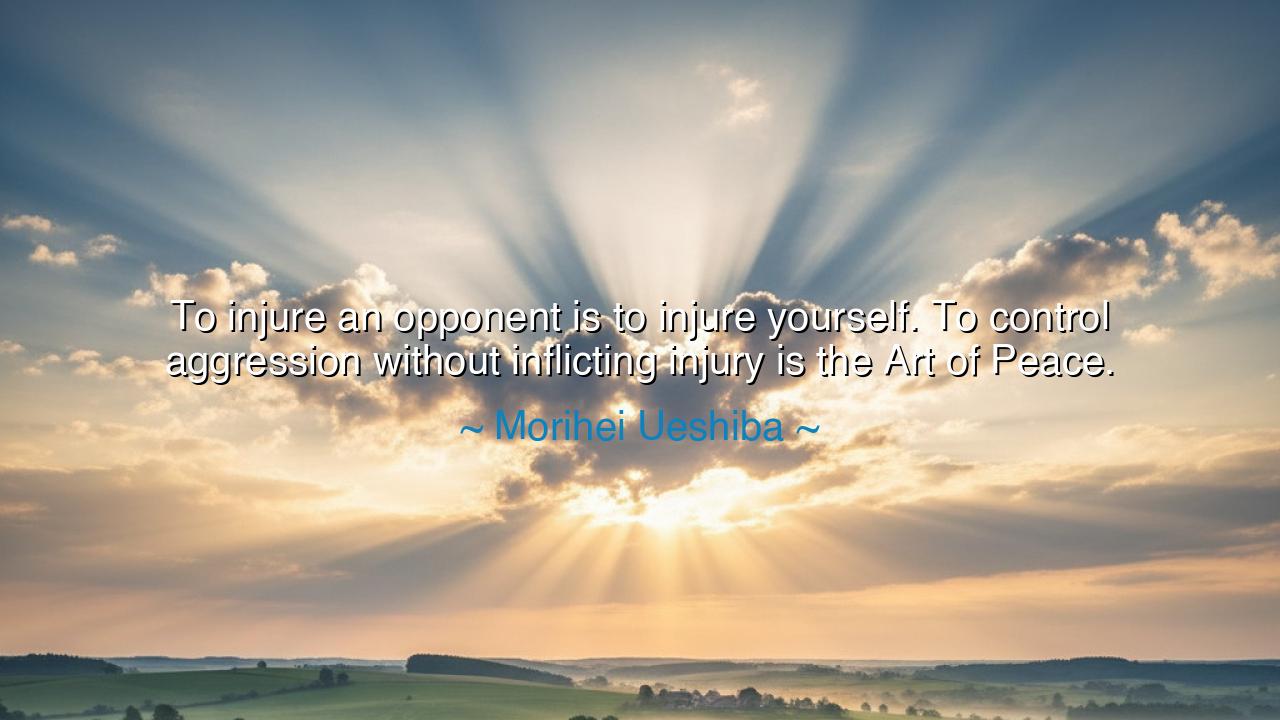
To injure an opponent is to injure yourself. To control
To injure an opponent is to injure yourself. To control aggression without inflicting injury is the Art of Peace.






Hear, O seeker of wisdom and balance, the immortal words of Morihei Ueshiba, founder of Aikido: “To injure an opponent is to injure yourself. To control aggression without inflicting injury is the Art of Peace.” These words are not merely a martial teaching, but a spiritual proclamation. They reveal that violence, though it may triumph in the moment, leaves behind wounds both visible and unseen. But true mastery lies not in destruction, but in the ability to subdue aggression while preserving life, dignity, and harmony.
The origin of this wisdom is rooted in Ueshiba’s life and practice. Born in Japan in the late 19th century, he lived through war and unrest, mastering many martial traditions. Yet from his deep study and his spiritual awakening, he concluded that the highest form of martial art was not conquest or injury, but peace. Thus he created Aikido—“the Way of Harmony”—an art that turns away an attacker’s force without seeking to harm them. It was both martial discipline and spiritual philosophy, declaring that to harm another is to diminish oneself, for we are bound in the web of shared humanity.
The ancients too declared this truth. The Stoics of Greece taught that to give way to anger is to enslave oneself, for hatred injures the heart that holds it. The sages of India, through ahimsa, proclaimed non-violence as the highest virtue: to resist evil without harming the evildoer. Even Christ, standing in the midst of oppression, said, “Love your enemies, bless those who curse you.” Across cultures, the same wisdom resounds: the true warrior restrains aggression not through brutality, but through compassion and mastery of self.
History gives us vivid examples. Consider Mahatma Gandhi, who resisted the might of the British Empire not with weapons, but with peaceful defiance. His non-violent resistance broke chains more powerfully than armies, proving that the Art of Peace could overcome aggression without inflicting injury. Or look to Nelson Mandela, who, after decades in prison, chose forgiveness over vengeance. By controlling the aggression that surrounded him, without seeking to wound, he brought forth reconciliation where there could have been ruin. Both lives reveal Ueshiba’s teaching in practice: peace is not weakness, but the highest form of strength.
Yet beware, O listener, for the way of peace is not easy. To respond to aggression without injury demands courage greater than that of the sword. It is simple to strike, but hard to restrain. It is easy to wound, but noble to protect even one’s enemy from harm. This is why Ueshiba called it an Art—for it requires discipline, mastery, and a vision beyond the self. Those who follow this way are not cowards, but warriors of the spirit, defenders of harmony in a world that too often worships destruction.
The lesson is clear: when you harm another, you also harm yourself, for the wound you inflict outwardly takes root in your own soul. But when you control aggression with restraint, when you deflect anger without multiplying suffering, you preserve not only the dignity of your opponent but the purity of your own heart. This is the path of lasting peace, the path that builds, rather than destroys.
Practical wisdom flows from this. In your daily life, do not answer insult with insult, nor strike back at those who wrong you in haste. Learn to master your own anger, to pause before reacting, to seek resolution rather than revenge. When conflict arises, look not for ways to wound, but for ways to restore balance. In this way, you practice the Art of Peace, not only in battle, but in the smallest struggles of family, work, and community.
So remember the teaching of Morihei Ueshiba: to injure an opponent is to injure yourself; to control aggression without inflicting injury is the Art of Peace. Let it be your guide in conflict, your shield in times of anger, your compass when darkness rises. For the warrior who masters this art becomes more than conqueror—he becomes a guardian of harmony, a healer of divisions, a living embodiment of peace.






AAdministratorAdministrator
Welcome, honored guests. Please leave a comment, we will respond soon